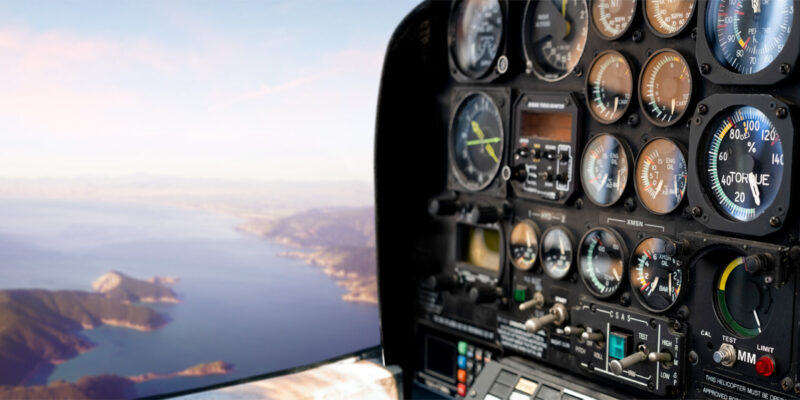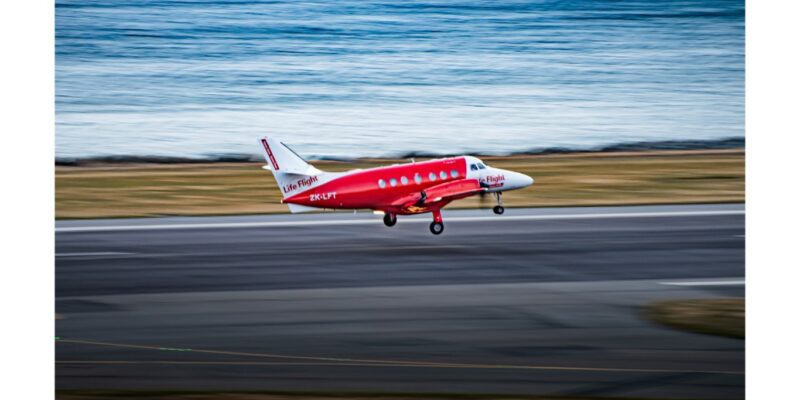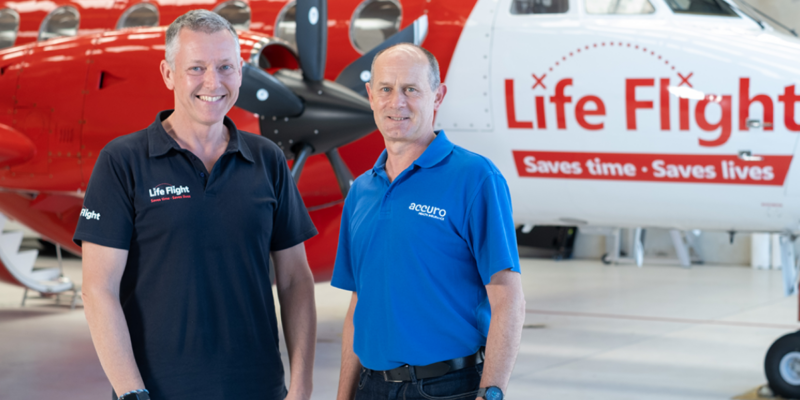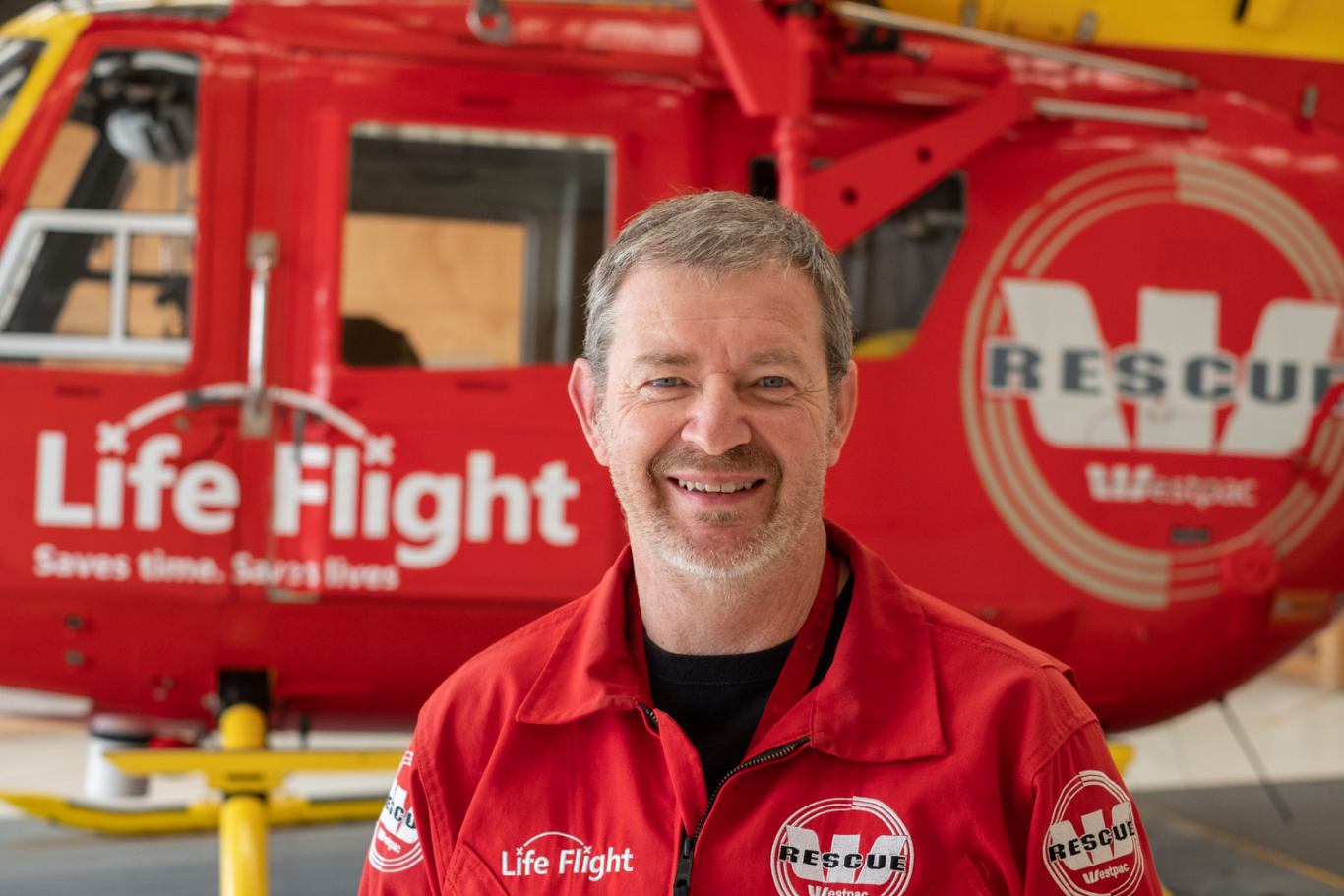Westpac Chopper Crewperson – Colin
COVID related Colin
Colin’s first COVID-19 related mission
In addition to normal procedures at Life Flight, a new and crucial layer has been added to ensure our teams are protected with the right training to deal with Covid-19 cases. Reflecting on his first COVID-19 related mission, Colin says: “We were on very high alert. Numbers were still going up.” Colin said. The Life Flight team continued to evolve procedures as the situation develops to ensure the safety of patients and crew.
With the patient not in a conscious enough state, and their medical history not known at the time Life Flight’s Westpac Chopper was called, the team couldn’t take any risks. The response in this scenario is to follow procedure and anticipate that the patient tests positive with Covid-19.
Full PPE gear was loaded into the aircraft, including protective suits, gloves, masks and safety glasses which were donned prior to arrival on the scene. Life Flight’s Westpac Rescue Helicopter also has a special set of curtains dividing the cockpit from the back of the aircraft to separate the pilot from everyone else. Colin explains that it’s important they try keep the pilot as far way from potential infection as possible so that Life Flight can continue to operate.
Both paramedic and crewman in full PPE gear loaded the patient, who is also wearing a mask, and assisted in the patient handover on the roof of Wellington Hospital following strict protocol.
The biggest task is the cleaning of the aircraft and personnel involved post-mission. It takes a few hours to have all surfaces cleaned thoroughly, including the medical equipment used, with certain products specifically approved by the helicopter manufacturer.
A specially-trained assistant crew member is brought in to help with this rigorous decontamination process. A crewman at base is tasked with backing the Westpac Chopper into the hangar so the tug is also not at risk of exposure to the virus. Removal of PPE gear is just as methodical, with the used gear placed in hazard bins and all flight gear immediately washed at base followed by a shower.
The Life Flight aeromedical teams treated every mission with caution, with the inability of knowing whether a patient is potentially infected with Covid-19.
“Extra cautious is the best way to describe how we’re feeling. It’s that whole thing of slowing everything down. ‘What are we doing and why are we doing it?’ It’s making sure everybody’s briefed and everybody’s okay.”
These detailed procedures can take additional physical and mental exhaustions on our crew which is why the extra support members are greatly needed. Life Flight trained additional support crew for assistance with Covid-19 related missions, including its Chief Executive Mark Johnston and support team members.
Related content
-
Read more about Missions overview

Missions overview
Discover Life Flight's crucial aeromedical missions in New Zealand, providing critical care and transportation with Westpac Rescue Helicopter and Air Ambulance Planes. Explore FY24 highlights, fleet details, and diverse mission types. Support our life-saving efforts today. -
Read more about Air Ambulance Planes Old

Air Ambulance Planes Old
Your local Westpac Rescue Helicopter is ready for anything, 24/7, thanks to the generosity of the community.The three Life Flight Air Ambulance Planes are flying intensive care units for the critically ill and injured. -
Read more about Accuro Health Insurance partners with Life Flight Trust

Accuro Health Insurance partners with Life Flight Trust
Two long-standing Wellington-based organisations dedicated to the health and wellbeing of New Zealanders have announced a new partnership. Not-for-profit Kiwi health insurer Accuro is now the principal Air Ambulance supporter for the Life Flight Trust.
